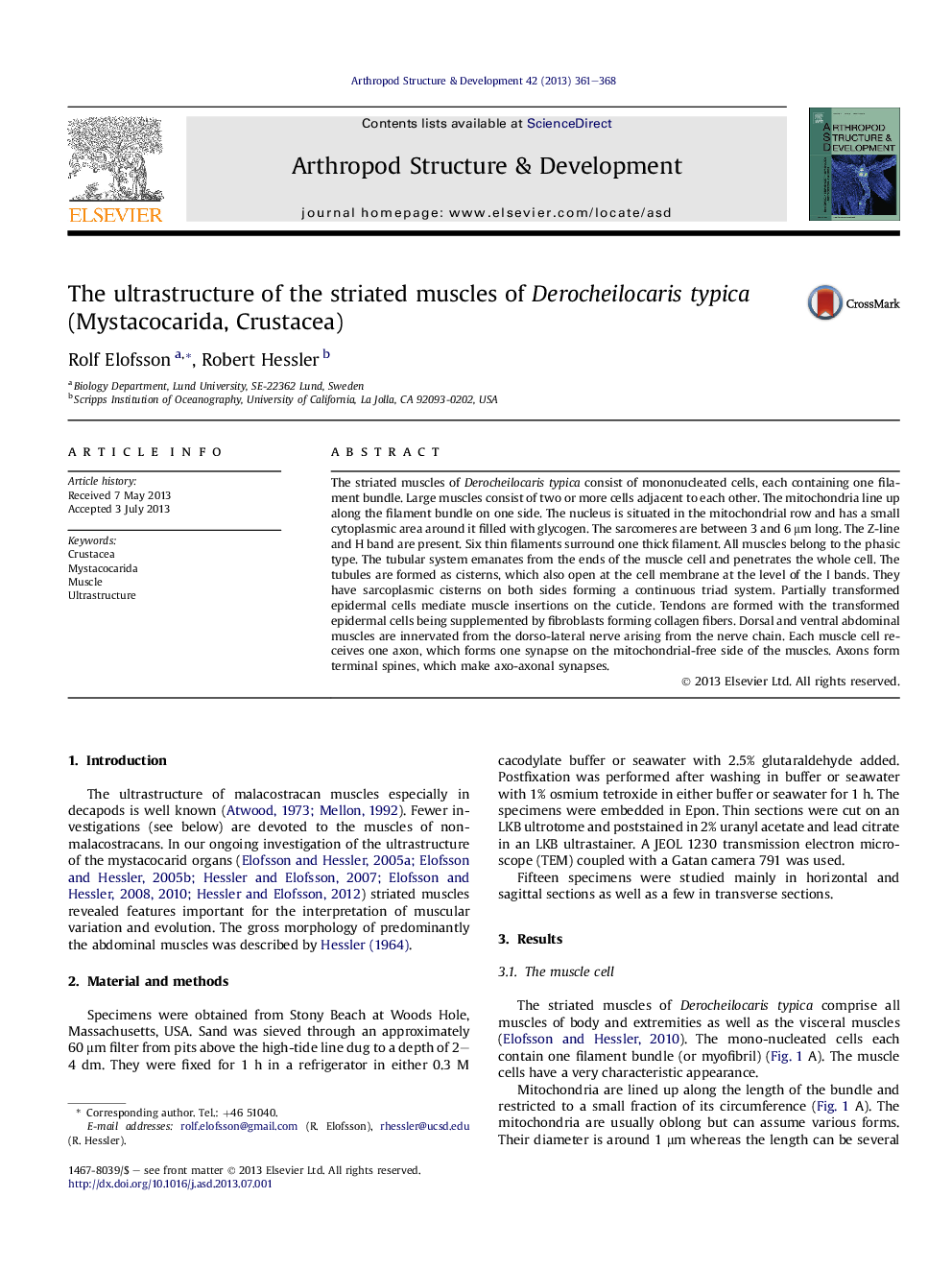| Article ID | Journal | Published Year | Pages | File Type |
|---|---|---|---|---|
| 2778717 | Arthropod Structure & Development | 2013 | 8 Pages |
•The mononucleated muscle cells are all phasic.•The tubular system emanates from the muscle ends.•The tubular/sarcoplasmic reticulum system has continuous triads.•Each muscle has one nerve fiber and one synapse.•Muscle insertions are mediated by a unique tendon cell.
The striated muscles of Derocheilocaris typica consist of mononucleated cells, each containing one filament bundle. Large muscles consist of two or more cells adjacent to each other. The mitochondria line up along the filament bundle on one side. The nucleus is situated in the mitochondrial row and has a small cytoplasmic area around it filled with glycogen. The sarcomeres are between 3 and 6 μm long. The Z-line and H band are present. Six thin filaments surround one thick filament. All muscles belong to the phasic type. The tubular system emanates from the ends of the muscle cell and penetrates the whole cell. The tubules are formed as cisterns, which also open at the cell membrane at the level of the I bands. They have sarcoplasmic cisterns on both sides forming a continuous triad system. Partially transformed epidermal cells mediate muscle insertions on the cuticle. Tendons are formed with the transformed epidermal cells being supplemented by fibroblasts forming collagen fibers. Dorsal and ventral abdominal muscles are innervated from the dorso-lateral nerve arising from the nerve chain. Each muscle cell receives one axon, which forms one synapse on the mitochondrial-free side of the muscles. Axons form terminal spines, which make axo-axonal synapses.
